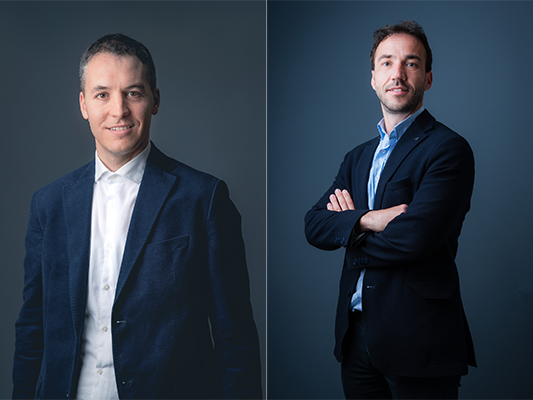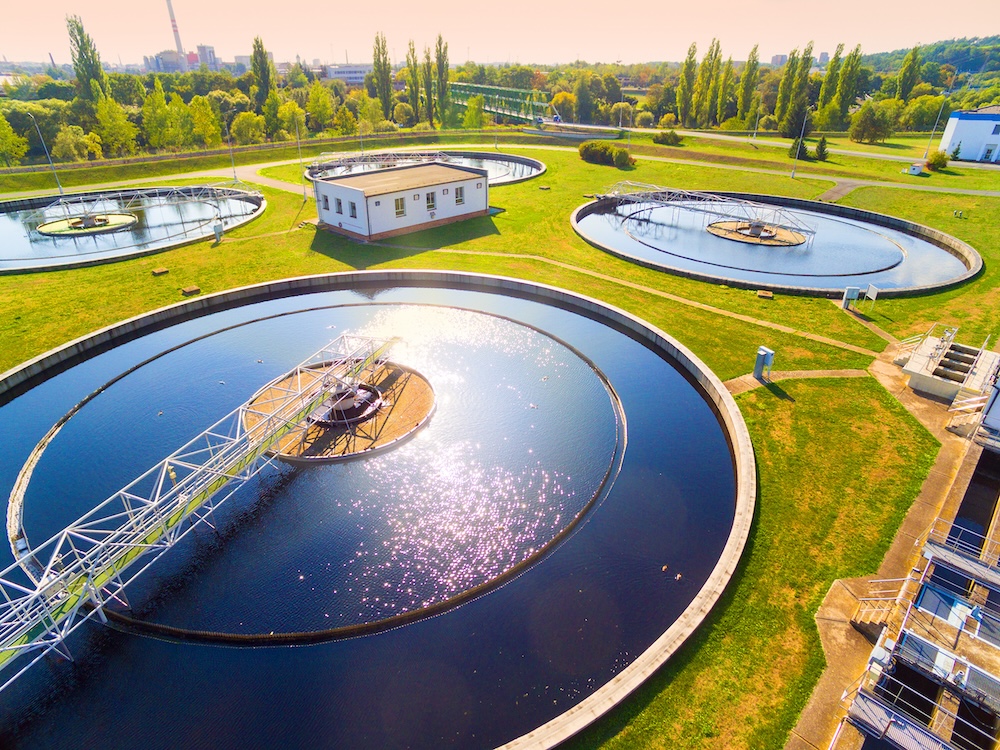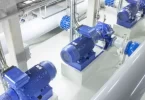The rising popularity of digital twin technology in the water industry is a testament to the enormous efficiency, sustainability, and safety benefits they provide.
To date, digital twins have mainly been used in drinking water networks – but this is changing.
We spoke to Javier Ortega, Sewage & Urban Drainage Specialist, and Jacobo Illueca, Wastewater Specialist at Idrica, to find out more about digital twins for wastewater networks, the challenges and opportunities for adoption, and what the future holds.

Javier Ortega (L) and Jacobo Illueca (R)
What is a digital twin and how does it relate to wastewater management?
Ortega: “A digital twin is a virtual replica that allows us to predict how real-world systems will respond to certain events. What differentiates a digital twin from a 3D model is that it is connected to real-time data feeds, allowing it to evolve in tandem with its real-world counterpart.”
Illueca: “In the wastewater industry, digital twins can be used to simulate the entire wastewater network.
“This union between the physical and digital worlds means that, for instance, the impact cause by changes in inflow or water quality can be measured accurately and in real time – as opposed to traditional models that act in isolation and become obsolete quite quickly requiring continuous calibration.
“Digital twins require lots of data from many sources, including Internet of Things (IoT) sensors, weather forecast, third-part applications, laboratory information management systems, CMS, and many others.
“The more accurate data fed into the twin, the more powerful it becomes.”
What are the differences between digital twins for sewage networks and those for wastewater treatment plants?
Ortega: “Digital twins serve different functions in these two systems. In the sewage network, decision-makers are most concerned with quantity in terms of flow management and transporting wastewater to treatment plants efficiently. However, in wastewater treatment plants (WWTPs) managers are more concerned with meeting quality targets while keeping operational costs at a minimum.”
Illueca added: “The nature of the assets is also different. Sewage networks are mainly comprised of physical assets such as pipes whereas WWTPs contain numerous electromechanical components, which result in highly distinct digital copies.”
What differentiates wastewater and drinking water digital twins?
Ortega: “The priorities are different. Wastewater managers are more interested in events such as peak flows or wet weather so digital twins are tailored to provide insights into predicting or forecasting the impact of these events.
“Drinking water networks are more tightly controlled systems, and so digital twins are designed to focus on variables such as pressure, leakage, and quality.”
Illueca added: “In WWTPs we have biological treatment processes involving micro-organisms, but this isn’t the case for drinking water treatment plants, again leading to a difference in the digital twin.”
What are some of the benefits of adopting wastewater digital twins?
Illueca: “By creating a union between the digital and physical worlds we can generate reliable information from the digital copy. These improved, real-time insights can help managers with everything from planning and design to operations and maintenance.
“Digital twins allow us to look at long-term trends and predict scenarios and possible vulnerabilities in the system. In the medium term they facilitate improved preventative maintenance decision-making, and in the short term they allow managers to see how the system will respond to certain changes.
“For example, if you can see changes in flow and concentration in the next 24hrs then a WWTP manager can make adjustments to produce less quantities of sludge or use less chemicals which can optimise costs and help meet quality targets.”
Are cities and utilities interested in this type of technology?
Ortega: “Absolutely. Technologies like big data and IoT have bought so much new information about water systems, but this information needs to be organised in a way that empowers decision-makers with insights that they can act upon. This is one of the big advantages of digital twins for cities.”
Illueca: “We are seeing a growing interest from cities to integrate wastewater digital twins into their broader smart city initiatives. There are many pilot projects emerging in cities across the world and I believe that this trend is set to continue.”
What do utilities need in order to implement a digital twin? What are the challenges for adoption?
Illueca: “The first step is to gather data from various sources to connect to the digital twin. It can be difficult to integrate all this information because it is so dispersed and housed in multiple formats. But the more data the better.
“The second step is to homogenise the data to create a unique model that generates information related to the assets. This process creates a ‘data lake’ and from this you can generate the information for use in the digital twin.
“It is also very important to have at least 6 months of historical data of the wastewater system in order to produce an accurate digital twin.”
Ortega: “One of the main challenges is achieving good quality data in real-time. It is crucial to differentiate between an anomaly that is real, or one caused by inaccurate data.
“In wastewater networks we can also have communication issues between sensors and data centres, especially in rural locations.
“Generally, the larger the system the more complex the process, however the larger the system the greater the benefits in the long term.”
How can wastewater digital twins help achieve broader sustainability goals?
Ortega: “Digital twins help to monitor and predict critical events and assess the environmental impact of these changes.
“In sewage networks digital twins provide critical environmental benefits by reducing the number of combined sewer overflows and thus reducing pollution and improving overall environmental performance.”
Illueca: “WWTPs need to reduce carbon emissions and their impact on the environment. If we can predict what will happen in the future that helps to significantly mitigate environment and social risks.”
And finally, what does the future hold for this technology?
Ortega: “I believe that in the future it will become an essential tool, allowing us to transform data into useful insights for water managers.”
Illueca concluded: “In the future we will see millions of digital twin use cases. As the depth of data increases and IoT sensors get deployed in wastewater networks across the world, this information will feed into increasingly accurate digital copies. There are many challenges that lie ahead, but more importantly – a plethora of opportunities.
Read more Idrica Articles and News on H2O Global News. Do you have an article or video that you would like to share? Submit your article here or keep up with the latest news from the water industry and wastewater industry by subscribing to our weekly newsletter







